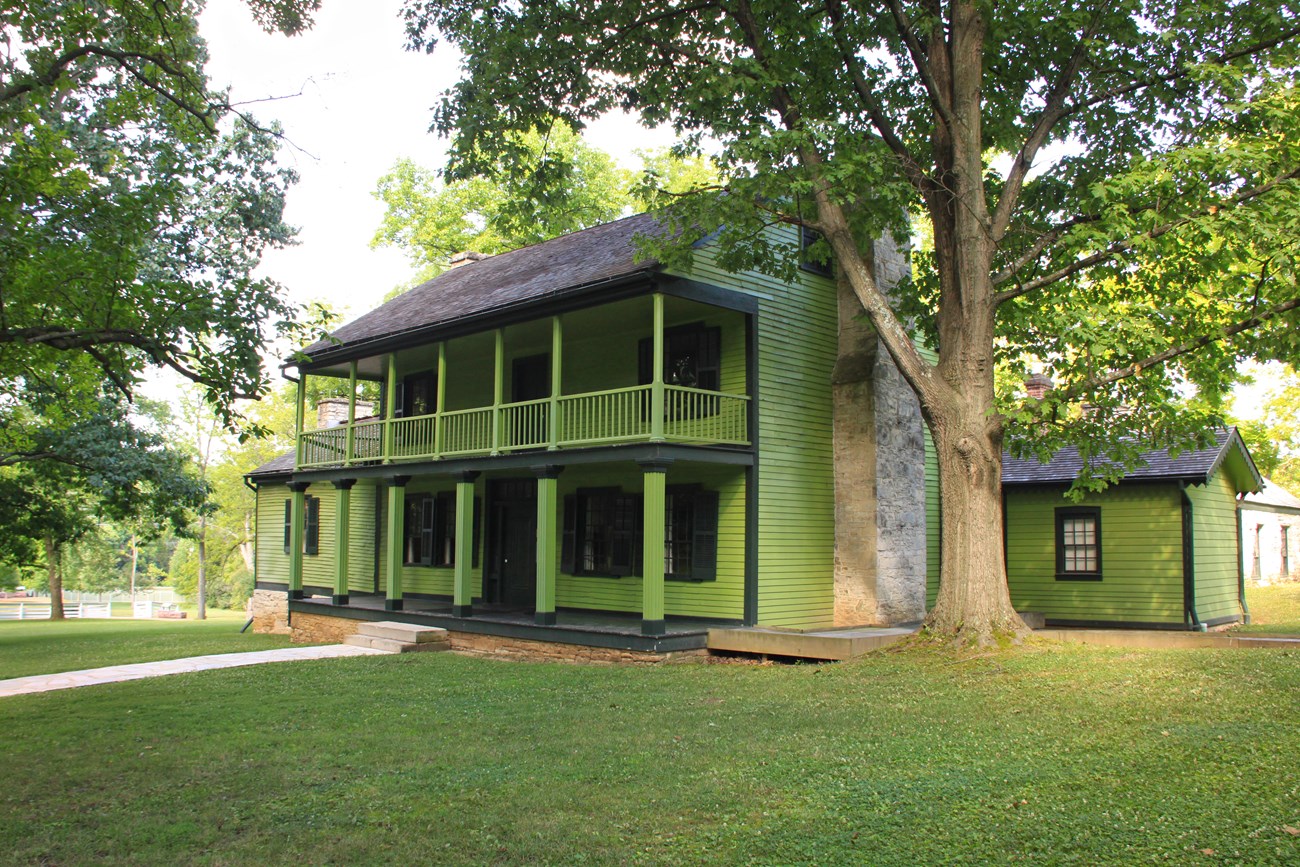Last updated: August 23, 2022
Article
Grant at White Haven

NPS
by Frank Kohl
In 1854, Ulysses S. Grant returned home after resigning from the army. For two years, he had endured isolation from his family and suffered depression from several business failures. He was elated to reunite with his wife, Julia Dent Grant, and two sons, one of whom he had never met. Together they lived with his parents- and sister-in-law.
Unlike most southerners, Ulysses worked alongside his in-laws enslaved black laborers. Together, they planted and farmed a variety of crops. During the winter, Grant sold wood in nearby St. Louis, often standing on street corners in his shabby work clothes. One anecdote saw a US-Mexican War officer who encountered Grant and exclaimed “Great God, Grant, what are you doing?” Ulysses responded in his typically dry, reserved tone. “I am solving the problem of poverty.”
In 1857, Ulysses built a wooden home for his ever-growing family, which now included two boys, one girl, and a pregnant wife. Ulysses named the home Hardscrabble, due to its rough construction.
During this time, Grant’s father-in-law gave him an enslaved person named William Jones. Though his family struggled financially, Grant was resolved to make good on a promise he had made while living with his in-laws: that he would free, not sell, any enslaved person that came into his possession. On March 29, 1859, Grant gave William his freedom by signing a manumission.
In 1859, Ulysses S. Grant and his family moved to nearby St. Louis, where Grant worked in a variety of occupations before the outbreak of the Civil War.
White Haven Today
Today, Ulysses S. Grant National Historic Site preserves the stories and experiences of the residents of White Haven, both free and enslaved. Visitors can tour the original Main House and the surrounding buildings. The Visitor Center offers a museum and introductory video. Another museum is housed in the historic horse stable. Grant’s self-built cabin Hardscrabble is located roughly a mile away on present day Grant’s Farm, which is operated by Anheuser-Busch.
The Odyssey of Ulysses explores the saga of U. S. Grant from his first battle to his final resting place. For information on this Article Series project, contact us.
